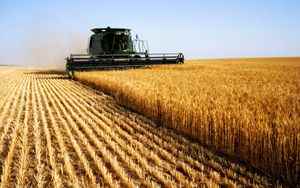(Finance) – The increase in the prices of raw materials, due to the Russia-Ukraine conflict, is pushing upwards food price inflation in the economies of the Middle East and North Africa (MENA) and could lead to socio-political destabilizations. Specifically, they are five MENA countries – Egypt, Jordan, Lebanon, Morocco and Tunisia – most affected by the economic fallout from the conflict, because their economies are significantly dependent on imports of food or energy (or both), and they source much of their grain supply from Russia and Ukraine. This was stated in a new report by S&P Global Ratings on the subject.
Given the social pressures, the rating agency’s economists believe that the governments of these countries “will have to resort to tax programs to cushion the impact and prevent social discontentboth through subsidies and other forms of support. “All this now seems inevitable given the weight on the agri-food scene of the countries involved in the conflict. Russia and Ukraine together account for almost 60% of global sunflower oil exports, over 25% of wheat and almost 15% maize, and Russia and Belarus are important producers of fertilizers.
According to S&P, Lebanon and Jordan are the most exposed, as they spend over 10% of GDP for energy and food imports. Imports of food and, above all, energy are also significant for Tunisia. Morocco’s energy import bill is one of the largest as a share of GDP within the sample of 35 emerging markets (EM) globally analyzed. However, it is emphasized that Morocco’s position as a major exporter of potassium contributes to some extent to alleviate this problem. However, its economy is certainly vulnerable to ongoing developments in food markets given its high size dependence on cereal imports. Egypt has recently become a gas exporter, but is potentially very vulnerable to rising food prices.
The analysis recalls that there are numerous empirical studies linking rising international food prices with a greater likelihood of socio-political instability, including riots, protests and violent conflicts. Examples given by S&P include the 1977 bread riots in Egypt, the 1984 riots in Morocco also known as the bread intifada, the 1989 protests in Jordan, and the 2008 protests which largely occurred in the region. .
Even the protests of the Arab Spring of 2011 coincided with sharp increases in food prices. “While other important factors were also behind the social unrest in 2011-2012, such as high youth unemployment, income inequality and general discontent with the political systems of the time, rising food prices, in particular the cost of bread is considered to be one of the factors that sparked mass protests“, the research reads.
